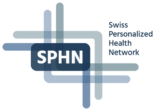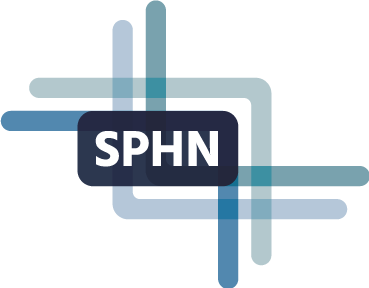Today marks a significant achievement for the Swiss Personalized Health Network (SPHN) with the announcement of the 2023 version (2023.2) of the SPHN Semantic Interoperability Framework. This latest release subercedes the 2023.1 release, which was softlaunched earlier in March, and sets the foundation for all SPHN National Data Streams and Demonstrator Projects. Included in this release are essential components such as the SPHN Dataset (Pillar 1), the SPHN RDF Schema (Pillar 2), complete with its web visualization, and a migration path between the 2022.2 and 2023.2 versions.
To ensure the highest level of quality, the SPHN Quality Assurance Framework has been carefully developed, featuring robust validation rules (SHACL) and statistical queries (SPARQL). Furthermore, projects will have access to a “Dataset Template” and “RDF Schema Template” that will streamline their efforts to extend the SPHN Semantic Interoperability Framework for their needs.
This accomplishment was made possible by the lead of the Data Interoperability Team (now FAIR Data Team) of the SPHN Data Coordination Center (DCC), along with collaborators from the University Hospitals, Health 2030 and the BioMedIT network.
Main improvements and new items to the SPHN Semantic Interoperability Framework
The SPHN Dataset has undergone significant enhancements, including:
- Additional SPHN concepts, such as cardiology and genomic concepts, have been added.
- The data file concept has been introduced, enabling the linking of graph data with other raw files, such as DICOM or genomic raw data.
- Concept value sets and meaning binding have been updated according to the latest SNOMED CT release.
The SPHN RDF Schema has been updated to reflect the changes made to the SPHN Dataset, thereby enabling the extended use of external terminologies. The following improvements have been made to the Terminology Service:
- Three additional external terminologies, namely Sequence Ontology (SO), Genotype Ontology (GENO), and HUGO nomenclature (HGNC), are now available on the Terminology Service and can be used in the SPHN Semantic Interoperability Framework.
- Multilingual labels (German and French) have been added to the RDF representation of ICD-10-GM.
- Versioning of external terminologies is now possible with the new implementation of the Terminology Service, enabling tracking of updates and changes over time for ICD-10-GM, CHOP, and ATC.
To enhance the user experience, new features have been added to the tools and services, including:
- RDF schema visualization, which includes additional search functionality and a navigation bar, making it even easier to navigate and find the information required.
- A new Dataset Template is now available for all projects, allowing for the easy extension of the existing SPHN Dataset with project-specific concepts.
- A quality assurance framework has been introduced, featuring a set of basic statistical queries (e.g., counting instances per concept and predicates, minimum and maximum values/dates per predicate, and a list and count of all used codes) to ensure that data quality is maintained at all times.
Availability
- The SPHN Dataset is openly available here: https://sphn.ch/document/sphn-dataset/
- The SPHN RDF Schema is browsable here: https://www.biomedit.ch/rdf/sphn-ontology/sphn/2023/2
- The external terminologies in RDF are accessible on BioMedIT Portal: https://portal.dcc.sib.swiss/
- The Quality Assurance Framework is available here: https://git.dcc.sib.swiss/sphn-semantic-framework/sphn-ontology/-/tree/master/quality_assurance
- Project templates are available here: https://git.dcc.sib.swiss/sphn-semantic-framework/sphn-ontology/-/tree/master/templates
- A comprehensive documentation is openly accessible here: https://sphn-semantic-framework.readthedocs.io/en/latest/

